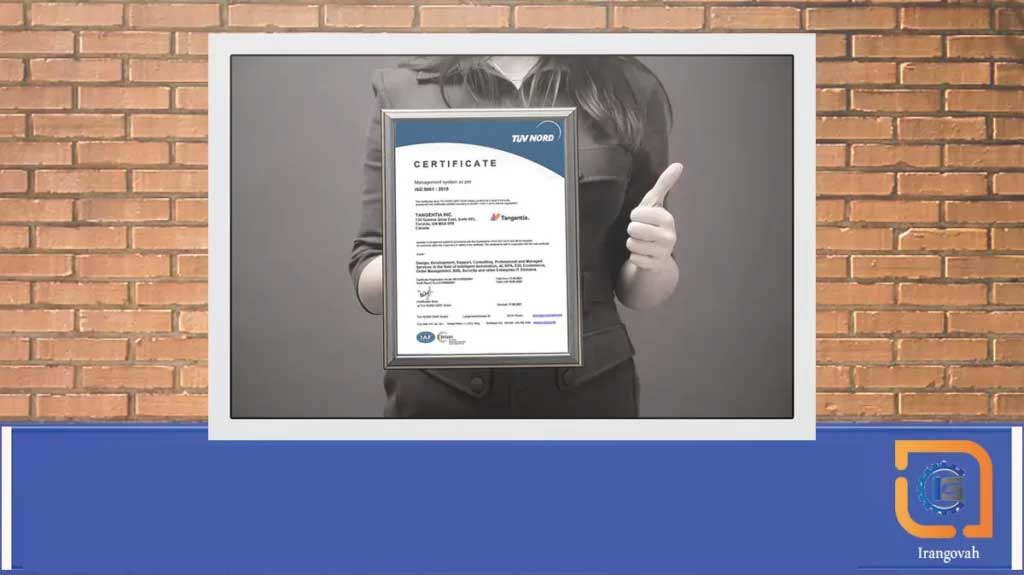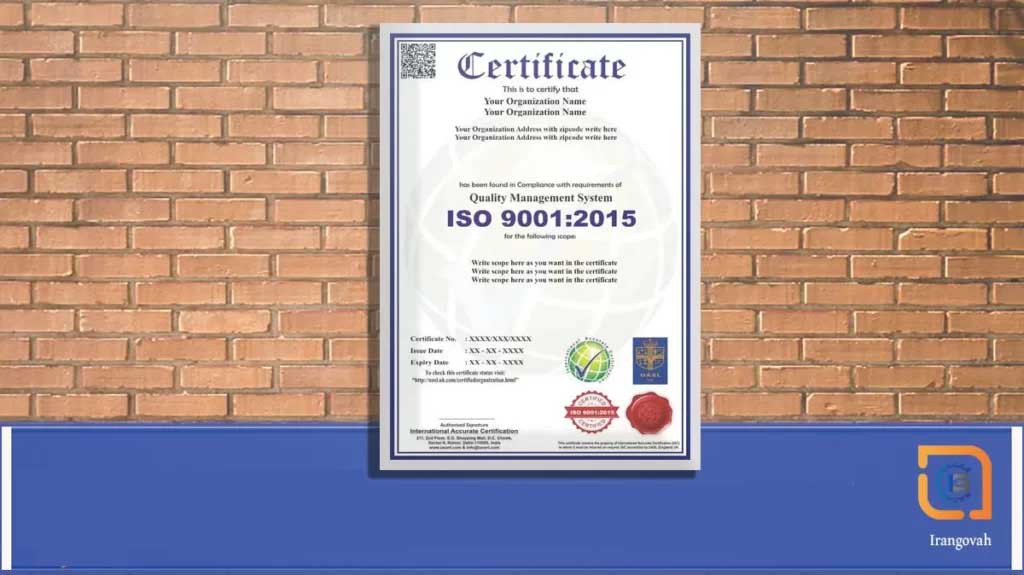ISO 22000: An Overview of Food Safety Management System Standard
ISO 22000 is a globally recognized food safety management system standard that provides a framework for organizations to manage food safety risks and ensure the safety of food products throughout the entire food chain. It was first published in 2005 and has since been updated to reflect changes in the food industry.

ISO 22000 is designed to be applicable to any organization, regardless of its size or location, that is involved in the food chain, from farm to fork. It is a comprehensive standard that covers all aspects of food safety management, including hazard analysis, control of hazards, management of pre-requisite programs, management of food safety management system, communication, and continual improvement.
The standard is based on the HACCP (Hazard Analysis and Critical Control Points) principles, which are a science-based approach to identifying and controlling food safety hazards. However, ISO 22000 goes beyond the HACCP principles by also addressing communication and continual improvement.
Organizations that implement ISO 22000 can benefit from improved food safety management, increased customer satisfaction, reduced risk of food safety incidents, and increased efficiency in food production and distribution. ISO 22000 certification is also recognized by the Global Food Safety Initiative (GFSI), which means that it is accepted by many major retailers and food service companies around the world.
What is ISO 22000?
ISO 22000 is an internationally recognized standard that outlines the requirements for a food safety management system (FSMS). It is designed to help organizations in the food and beverage industry ensure the safety and quality of their products throughout the entire food supply chain. The standard provides a framework for the development, implementation, and continual improvement of an effective FSMS. It covers all aspects of food safety, including hazard analysis, risk management, and communication, as well as the requirements for implementing Good Manufacturing Practices (GMPs), sanitation, and hygiene. ISO 22000 is applicable to all organizations, regardless of their size or location in the food chain.
Why is ISO 22000 Important?
ISO 22000 is important for several reasons:
- Ensuring Food Safety: ISO 22000 provides a comprehensive framework for ensuring the safety and quality of food products throughout the entire food supply chain, from farm to fork.
- Meeting Legal Requirements: Compliance with ISO22000 helps organizations meet legal requirements and regulatory obligations related to food safety.
- Enhancing Customer Confidence: ISO22000 certification demonstrates an organization’s commitment to food safety and quality, which can enhance customer confidence and trust in its products.
- Improving Operational Efficiency: Implementation of ISO22000 can help organizations streamline their food safety management processes and improve operational efficiency.
- Facilitating International Trade: ISO22000 is recognized and accepted internationally, which can facilitate trade between countries and regions by providing a common language and framework for food safety management.
Benefits of Implementing ISO 22000
Implementing ISO 22000 can provide several benefits to an organization, including:
- Enhanced Food Safety: ISO 22000 provides a comprehensive framework for identifying and controlling food safety hazards, which can help reduce the risk of foodborne illnesses and improve the safety and quality of food products.
- Compliance with Legal and Regulatory Requirements: Implementing ISO22000 can help organizations comply with legal and regulatory requirements related to food safety, which can reduce the risk of fines and legal action.
- Improved Operational Efficiency: Implementing ISO22000 can help organizations streamline their food safety management processes, which can reduce waste, minimize downtime, and improve overall operational efficiency.
- Increased Customer Confidence: ISO22000 certification demonstrates an organization’s commitment to food safety and quality, which can enhance customer confidence and trust in its products.
- Facilitated International Trade: ISO22000 is recognized and accepted internationally, which can facilitate trade between countries and regions by providing a common language and framework for food safety management.
- Competitive Advantage: ISO22000 certification can provide a competitive advantage by demonstrating an organization’s commitment to food safety and quality, which can help attract and retain customers.
Key Requirements of ISO 22000
The key requirements of ISO 22000 are:
- Development of a Food Safety Management System (FSMS): Organizations must develop a FSMS that outlines their policies, procedures, and processes for ensuring the safety and quality of their products.
- Hazard Analysis: Organizations must identify and evaluate potential food safety hazards and implement measures to control or eliminate them.
- Pre-requisite Programs (PRPs): Organizations must implement and maintain PRPs, which are basic conditions and activities necessary to maintain a hygienic environment and control food safety hazards.
- Operational Pre-requisite Programs (oPRPs): Organizations must identify and implement operational pre-requisite programs that are necessary to control specific food safety hazards.
- Management of Critical Control Points (CCPs): Organizations must implement and maintain CCPs, which are points in the food production process where control can be applied to prevent, eliminate or reduce a food safety hazard.
- Monitoring and Verification: Organizations must monitor and verify their FSMS to ensure that it is effective in controlling food safety hazards and achieving food safety objectives.
- Communication: Organizations must establish effective communication channels with stakeholders, including suppliers, customers, and regulatory authorities, to ensure that food safety issues are identified and addressed in a timely manner.
- Continual Improvement: Organizations must continually review and improve their FSMS to ensure its ongoing effectiveness in controlling food safety hazards and achieving food safety objectives.
ISO 22000 Certification Process
The ISO 22000 certification process typically involves the following steps:
- Gap Analysis: The organization conducts a gap analysis to identify any areas where it does not comply with the ISO 22000 standard.
- FSMS Development: The organization develops a Food Safety Management System (FSMS) that meets the requirements of ISO 22000.
- Internal Audit: The organization conducts an internal audit to ensure that its FSMS is effective and compliant with ISO 22000.
- Corrective Actions: Any non-conformities identified during the internal audit are addressed and corrected.
- Certification Audit: The organization engages a third-party certification body to conduct a certification audit. The certification audit involves a review of the organization’s FSMS to ensure that it meets the requirements of ISO 22000.
- Certification Decision: Based on the results of the certification audit, the certification body makes a decision on whether to issue ISO 22000 certification to the organization.
- Surveillance Audits: The certification body conducts surveillance audits on an ongoing basis to ensure that the organization’s FSMS continues to meet the requirements of ISO22000.
- Re-Certification Audit: The organization must undergo a re-certification audit at least once every three years to maintain its ISO22000 certification. The re-certification audit is similar to the initial certification audit and involves a review of the organization’s FSMS to ensure that it continues to meet the requirements of ISO 22000.
If you decide to get ISO 22000 certificate, contact us now. The certificates obtained by Iran Govah are under the accreditation of IAF.
How to Implement ISO 22000 in Your Organization? Step-by-Step Guide
Implementing ISO 22000 in an organization involves the following steps:
- Obtain Senior Management Support: Senior management should commit to implementing ISO 22000 and allocate the necessary resources to the project.
- Assemble a Project Team: Form a project team with representatives from different departments who have knowledge and expertise in food safety management.
- Conduct a Gap Analysis: Conduct a gap analysis to identify the areas where the organization needs to improve to meet the requirements of ISO 22000.
- Develop a Project Plan: Develop a project plan that outlines the steps involved in implementing ISO 22000 and sets timelines and milestones.
- Develop a Food Safety Policy: Develop a food safety policy that defines the organization’s commitment to ensuring the safety of its products and outlines its objectives for achieving this.
- Identify Food Safety Hazards: Identify food safety hazards that may be present in the organization’s processes and products.
- Develop a Hazard Analysis and Critical Control Points (HACCP) Plan: Develop a HACCP plan to identify critical control points where control measures can be implemented to prevent, eliminate or reduce food safety hazards.
- Develop Pre-Requisite Programs (PRPs): Develop PRPs to ensure a hygienic environment and control food safety hazards.
- Develop Operational Pre-Requisite Programs (oPRPs): Develop oPRPs to control specific food safety hazards.
- Train Employees: Train employees on the organization’s food safety management system, including the policies, procedures, and processes for ensuring food safety.
- Conduct Internal Audits: Conduct internal audits to evaluate the effectiveness of the food safety management system and identify areas for improvement.
- Take Corrective Actions: Address any non-conformities identified during internal audits and take corrective actions to prevent them from recurring.
- Seek Certification: Engage a third-party certification body to conduct a certification audit. If the organization meets the requirements of ISO 22000, the certification body may issue certification.
- Continual Improvement: Continually review and improve the food safety management system to ensure its ongoing effectiveness in controlling food safety hazards and achieving food safety objectives.
Common Challenges in ISO 22000 Implementation and How to Overcome Them
Implementing ISO 22000 can present several challenges for organizations. Here are some common challenges and strategies for overcoming them:
- Lack of Senior Management Commitment: Senior management may not fully commit to the implementation of ISO22000, making it difficult to allocate the necessary resources and provide the necessary leadership. To overcome this challenge, the project team should educate senior management on the benefits of ISO 22000 and how it can improve the organization’s food safety performance.
- Inadequate Employee Training: Employee training is critical to the success of ISO 22000 implementation. However, organizations may not allocate sufficient resources to train employees. To overcome this challenge, organizations should develop a comprehensive training program that includes training on the organization’s food safety policies, procedures, and processes (1).
- Lack of Resources: Organizations may lack the necessary resources to implement ISO22000. To overcome this challenge, the project team should develop a project plan that outlines the necessary resources and the associated costs. The plan should be presented to senior management for approval.
- Resistance to Change: Resistance to change can be a significant obstacle to ISO22000 implementation. To overcome this challenge, the project team should involve employees in the implementation process and communicate the benefits of ISO22000. Employees should be encouraged to provide feedback and suggestions for improvement.
- Lack of Understanding of the Standard: Organizations may not fully understand the requirements of ISO 22000, making it difficult to implement. To overcome this challenge, the project team should obtain training and guidance from experts in food safety management and ISO 22000.
- Inadequate Documentation: Documentation is a critical aspect of ISO 22000 implementation. Organizations may struggle to develop adequate documentation to meet the requirements of the standard. To overcome this challenge, the project team should develop a comprehensive documentation plan that includes the necessary policies, procedures, and records.
- Lack of Continuous Improvement: ISO 22000 requires organizations to continually review and improve their food safety management system. Organizations may struggle to maintain the necessary focus on continuous improvement. To overcome this challenge, the project team should establish a culture of continuous improvement and implement a system for monitoring and evaluating the effectiveness of the food safety management system.
ISO 22000 vs Other Food Safety Management Standards
ISO 22000 is one of several food safety management standards available to organizations. Here is a comparison of ISO22000 with other commonly used food safety management standards:
- Hazard Analysis and Critical Control Points (HACCP): HACCP is a systematic approach to identifying, evaluating, and controlling food safety hazards. It is a prerequisite for ISO 22000 and is often used in conjunction with ISO 22000. While HACCP focuses on specific hazards, ISO 22000 takes a more comprehensive approach to food safety management.
- British Retail Consortium (BRC) Global Standard for Food Safety: BRC is a food safety management system that is widely used in the UK and Europe. It focuses on hazard analysis, risk assessment, and risk management. While it shares some similarities with ISO 22000, BRC is more prescriptive and requires a higher level of documentation.
- Safe Quality Food (SQF) Code: SQF is a food safety management system that is widely used in North America. It is based on HACCP principles and focuses on food safety management, quality management, and supplier management. SQF is more prescriptive than ISO22000 and requires a higher level of documentation.
- International Featured Standards (IFS) Food Standard: IFS is a food safety management system that is widely used in Europe. It is based on HACCP principles and focuses on food safety management, quality management, and legal compliance. IFS is similar to ISO22000 but is more prescriptive and requires a higher level of documentation.
- Global Food Safety Initiative (GFSI): GFSI is not a food safety management system, but rather a benchmarking organization that sets standards for food safety management systems. ISO 22000, BRC, SQF, and IFS are all recognized by GFSI as meeting their standards.
In summary, while each of these food safety management standards has its unique features, they share many similarities. ISO22000 is a comprehensive food safety management standard that focuses on the entire food chain and emphasizes the importance of a systematic approach to food safety management.
ISO 22000 Comparison with HACCP
ISO 22000 and HACCP are both food safety management systems, but there are some key differences between the two. Here is a comparison of ISO 22000 with HACCP:
- Approach: HACCP is a systematic approach to identifying, evaluating, and controlling food safety hazards. It focuses on specific hazards and critical control points (CCPs) in the food production process. ISO22000 takes a more comprehensive approach to food safety management, covering the entire food chain and emphasizing the importance of a management system that addresses food safety hazards at all stages.
- Scope: HACCP is typically applied to specific products or processes, while ISO22000 can be applied to the entire food chain. ISO22000 covers all aspects of food safety management, including management responsibility, resource management, product realization, and measurement, analysis, and improvement.
- Requirements: HACCP has a set of seven principles that must be followed to ensure effective food safety management. ISO22000 has a set of requirements that must be met, including the development of a food safety policy, a hazard analysis, and the establishment of a food safety management system.
- Documentation: HACCP requires a documented food safety management plan, including hazard analysis, critical control points, and monitoring procedures. ISO 22000 requires a more extensive set of documented procedures, including food safety policy, food safety objectives, hazard analysis, control measures, and a documented food safety management system.
- Certification: HACCP certification is typically provided by third-party auditors, while ISO22000 certification is more widely recognized and is a requirement for many international markets.
In summary, while HACCP and ISO 22000 share some similarities, ISO22000 takes a broader approach to food safety management and emphasizes the importance of a systematic approach to food safety management across the entire food chain.
ISO 22000 Comparison with FSSC 22000
ISO 22000 and FSSC 22000 are both food safety management systems, but FSSC 22000 is a more specific and prescriptive standard that builds upon the requirements of ISO 22000. Here is a comparison of ISO 22000 with FSSC 22000:
- Scope: ISO 22000 applies to any organization involved in the food chain, while FSSC 22000 is designed specifically for food manufacturers and covers both food safety and quality management.
- Requirements: FSSC 22000 incorporates the requirements of ISO 22000 and adds additional requirements, including mandatory communication with customers, a food defense plan, and requirements for the management of allergens, GMOs, and environmental monitoring.
- Certification: While both ISO 22000 and FSSC 22000 are recognized by the Global Food Safety Initiative (GFSI), FSSC 22000 has become increasingly popular because it provides a more comprehensive approach to food safety management and is more prescriptive than ISO 22000.
- Implementation: While ISO 22000 allows for some flexibility in the implementation of a food safety management system, FSSC 22000 requires strict adherence to its requirements.
In summary, FSSC 22000 is a more specific and prescriptive food safety management system that builds upon the requirements of ISO 22000. It is designed specifically for food manufacturers and is more popular than ISO 22000 because it provides a more comprehensive approach to food safety management.
Conclusion
ISO 22000 is a comprehensive food safety management system standard that provides a framework for organizations to manage food safety risks and ensure the safety of food products throughout the entire food chain. By implementing ISO 22000, organizations can benefit from improved food safety management, increased customer satisfaction, reduced risk of food safety incidents, and increased efficiency in food production and distribution.
ISO 22000 is based on the HACCP principles and goes beyond them by also addressing communication and continual improvement. It is recognized by the Global Food Safety Initiative (GFSI), which means that it is accepted by many major retailers and food service companies around the world.
While implementing ISO 22000 can be challenging, the benefits of doing so far outweigh the costs. Ultimately, ISO22000 is an important tool for ensuring the safety of food products and maintaining customer confidence in the food industry.


